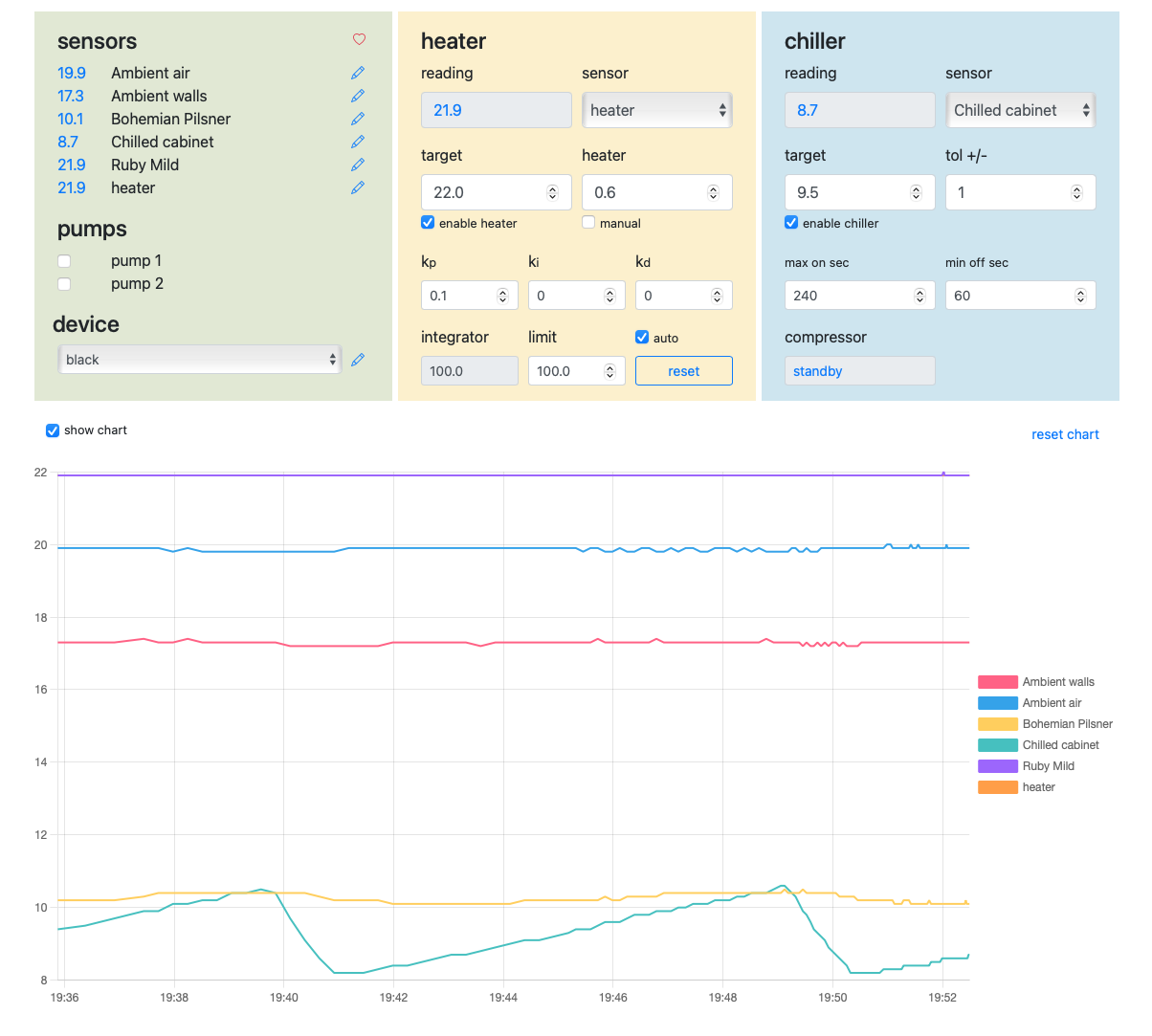Well it’s been a long time coming due to other commitment, but today I finally did my third AG brew (woo Hoo).
It was a day of ’firsts’:

So there are two pumped circuits: the heating circuit (left) circulates water through a temperature controlled kettle, while the mash recirculation circuit (right) pumps hot liquor through the mash tun. Heat exchange is obviously done with the counterflow. Everything worked a treat: temperature control was good to less than 0.1°C and I’m glad to say no pump blockages.
Oh and that mistake at the end...? Well after the boil everything was good, and I was mighty impressed at how much time it saved using the counterflow as a chiller. But as usual I saw there was quite a bit of wort left in the Burco below the level of my take-off filter. “No Problem!” I thought, I’ll bail the rest out and filter it though a kitchen sieve into the FV.... yep... that worked well. Right up to the point where the sieve full of hot hop debris slipped and fell into the FV!! Aaargh! #facepalm Oh well... pour it back, wash out the FV and try again... just what I did NOT need at the end of a long day LoL - lesson learned...
Oh well... pour it back, wash out the FV and try again... just what I did NOT need at the end of a long day LoL - lesson learned...
It was a day of ’firsts’:
- first time doing water treatment (thanks for the advice @strange-steve, @JockyBrewer)
- first time brewing @Galena ’s Best Bitter (thanks for the recipe Mr G)
- first time doing HERMS
- first time using liquid yeast
- first time using my counterflow
- first (and hopefully last) time making a spectacularly annoying mistake right at the end

So there are two pumped circuits: the heating circuit (left) circulates water through a temperature controlled kettle, while the mash recirculation circuit (right) pumps hot liquor through the mash tun. Heat exchange is obviously done with the counterflow. Everything worked a treat: temperature control was good to less than 0.1°C and I’m glad to say no pump blockages.
Oh and that mistake at the end...? Well after the boil everything was good, and I was mighty impressed at how much time it saved using the counterflow as a chiller. But as usual I saw there was quite a bit of wort left in the Burco below the level of my take-off filter. “No Problem!” I thought, I’ll bail the rest out and filter it though a kitchen sieve into the FV.... yep... that worked well. Right up to the point where the sieve full of hot hop debris slipped and fell into the FV!! Aaargh! #facepalm
 Oh well... pour it back, wash out the FV and try again... just what I did NOT need at the end of a long day LoL - lesson learned...
Oh well... pour it back, wash out the FV and try again... just what I did NOT need at the end of a long day LoL - lesson learned...

























